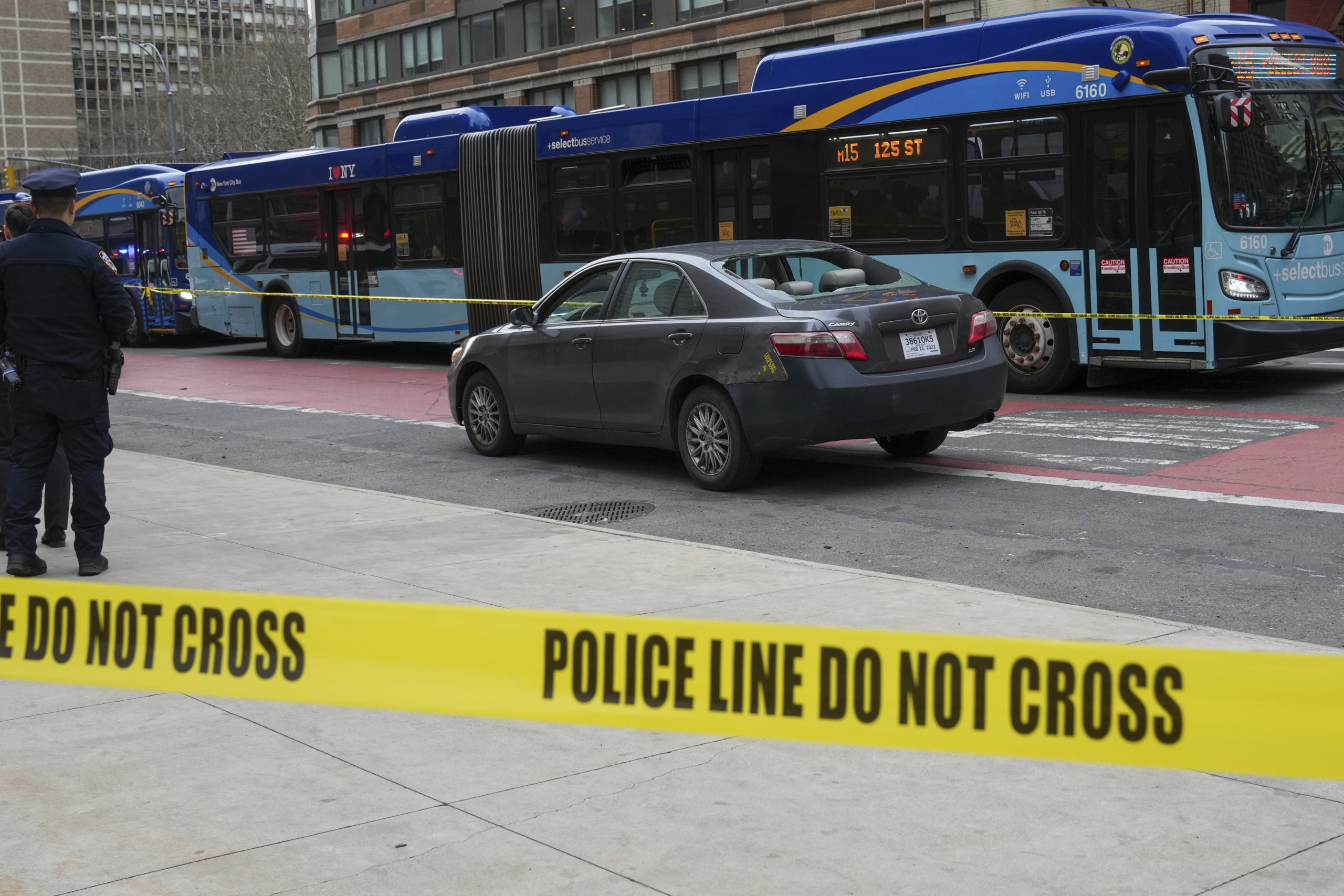On April 17, two drivers in Las Vegas began arguing while stopped at a red light. They got out of their cars, physically fought, and then one of them pulled out a gun. John Michael Owen, 42, was killed. He left behind three children.
“Everyone just needs to take a breath,” a police spokesperson implored. “People are going to cut each other off. Nothing is worth somebody’s life.”
Owen was one of 41 people who have been fatally shot in road rage incidents in the United States so far this year, according to Gun Violence Archive. Another 115 people have been injured.
Spurred by recent reports that road rage shootings are on the rise, Hannah Dineen, a reporter from 10 Tampa Bay in Florida, emailed us to ask:
“I’m wondering if you have any data on road rage shootings in recent years. Specifically, how many were there in 2020 and 2021? And how many were in Florida?”
What the data tells us
Law enforcement agencies do not release statistics on road rage shootings as a specific category of crime. But the Gun Violence Archive, a Kentucky-based nonprofit that tallies shootings in near-real time, tracks incidents in which someone in a car brandishes a gun in a threatening manner or fires at a driver or passenger in another car.
Last year, according to GVA, there were 728 road rage incidents involving guns in the United States, resulting in 132 deaths and 390 injuries. That’s up slightly from 2020, when there were 701 incidents, resulting in 102 deaths and 306 injuries.
Earlier this month, researchers at the gun reform group Everytown for Gun Safety calculated that a person was shot in a gun-related road rage incident every 17 hours, on average, in 2021. (Through its nonpolitical arm, Everytown provides grants to The Trace. You can find our donor transparency policy here, and our editorial independence policy here.)

Where are these shootings happening?
In almost every corner of the country. According to GVA’s data, every state but Wyoming recorded at least one road rage shooting last year.
When looking at the total number of incidents, Texas, Florida, and California lead the pack. Texas recorded 467 incidents involving guns, including 358 where people were shot. Eighty-seven shootings led to fatalities.
The states that recorded the fewest armed road rage incidents were Wyoming, the Dakotas, Rhode Island, and Maine.
Examining rates per 100,000 residents allows us to see the states where road rage incidents involving guns are the most frequent. By this metric, New Mexico, Tennessee, and Vermont have the highest rates of armed road rage, while Wyoming, New Jersey, and New York have the lowest.
Road rage shootings are becoming more frequent — and getting deadlier
The Trace first examined gun-related road rage five years ago, when we reported that brandishings and shootings had more than doubled between 2014 and 2016.
The trend has continued. GVA’s more recent data shows us that gun deaths and injuries in road rage incidents increased 98 percent between 2017, when 263 people were shot, and 2021, when 522 people were shot.
All told, 1,732 people were shot in road-rage incidents across the United States from 2017 through 2021, according to the GVA data, 439 of them fatally.
An analysis of the GVA data reveals another troubling trend: Road rage incidents in which a gun is present are more likely to result in a shooting. In 2017, just over a third of incidents involved gunfire, while in 2021, nearly two-thirds did.
Why are road-rage shootings on the rise?
It’s not yet clear.
Experts point to a number of factors, including the massive surge in gun sales during the pandemic. Americans bought more than 40 million guns in 2020 and 2021, the two highest sales years on record. As many as five million people were first-time buyers.
“Although guns don’t directly cause violence, they dramatically increase the likelihood that any situation involving conflict will be lethal,” said Brad Bushman, a professor of communications at The Ohio State University, who researches aggression and violence. “Imagine you’re in a car and somebody cuts you off. If there’s no gun in your car, maybe you flip them off. And if there’s a gun in your car, maybe you shoot them.”
The pandemic has also frayed nerves and raised anxiety levels, leading to the highest number of traffic deaths in 14 years in 2021. Experts recently told The Los Angeles Times that despair, isolation, and boredom may have led to recklessness on the roads. “You’ve been cooped up, locked down, and have restrictions you chafe at,” said Frank Farley, a professor of psychology at Temple University in Philadelphia. “So if you can have an arousal breakout, you want to take it.” There was also an increase in extreme speeding when roads were less congested during the lockdown phase of the pandemic, causing deadly crashes to spike. Drinking and drug use behind the wheel also rose.
Studies have also shown that the presence of a gun can compel people to act more aggressively. Bushman and his team at OSU authored an oft-cited 2017 study that examined this phenomenon, dubbed the “weapons effect,” in drivers. The researchers assembled a group of motorists and placed one of two objects in the passenger seat next to them: a black Airsoft gun or a tennis racket. They found that drivers were more likely to engage in aggressive driving behaviors like tailgating and speeding if they were sitting next to the replica gun.
Bushman says there’s a body of research dating back more than 80 years showing that aggression is fueled by frustration. “Frustration means somebody blocks your goal,” Bushman said. “When you’re in a car, you have a definite goal — to get from point A to point B as fast as you can. Anything that interferes or blocks that goal can increase the likelihood that you’ll behave aggressively.”

